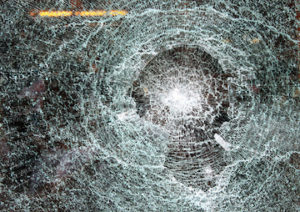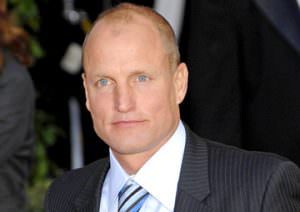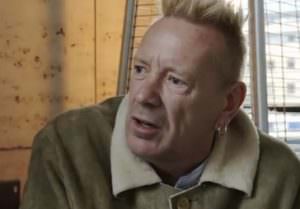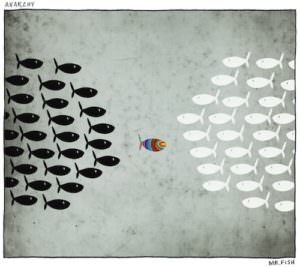A Master Class in Occupation
In the park and other Occupied sites across the country, middle-class men and women, many highly educated but unschooled in the techniques of resistance, are taught by those who have been carrying out acts of rebellion for years.In the park and other Occupied sites, middle-class men and women unschooled in the techniques of resistance are taught by those who have been carrying out acts of rebellion for years.
NEW YORK CITY — Jon Friesen, 27, tall and lanky with a long, dirty-blond ponytail, a purple scarf and an old green fleece, is sitting on concrete at the edge of Zuccotti Park leading a coordination meeting, a gathering that takes place every morning with representatives of each of Occupy Wall Street’s roughly 40 working groups.
“Our conversation is about what it means to be a movement and what it means to be an organization,” he says to the circle. A heated discussion follows, including a debate over whether the movement should make specific demands.
I find him afterward on a low stone wall surrounding a flowerbed in the park. He decided to come to New York City, he said, from the West Coast for the 10th anniversary of 9/11. He found a ride on Craig’s List while staying at his brother’s home in Champaign, Ill.
“It was a television event when I was 17,” he says of the 2001 attacks. “I came here for the 10-year anniversary. I wanted to make it real to myself. I’d never been to New York. I’d never been to the East Coast.”
Once he reached New York City he connected with local street people to find “assets.” He slept in the parks and on the street. He arrived on the first day of the occupation in Zuccotti Park. He found other “traveler types” whose survival skills and political consciousness were as developed as his own.
In those first few days, he says, “it was the radicals and the self-identifying anarchists” who set up the encampment. Those who would come later, usually people with little experience in dumpster diving, sleeping on concrete or depending on a McDonald’s restroom, would turn to revolutionists like Friesen for survival. Zuccotti Park, like most Occupied sites, schooled the uninitiated.
“The structure and process carried out by those initial radicals,” he says with delight of the first days in the park, now have “a wide appeal.”
The Occupy movements that have swept across the country fuse the elements vital for revolt. They draw groups of veteran revolutionists whose isolated struggles, whether in the form of squatter communities or acts of defiance such as the tree-sit in Berkeley to save an oak grove on the University of California campus that ran from Dec. 2, 2006, to Sept. 9, 2008, are often unheeded by the wider culture. The Occupy movements were nurtured in small, dissident enclaves in New York, Oakland, Chicago, Denver, Boston, San Francisco, Los Angeles and Atlanta. Bands of revolutionists in these cities severed themselves from the mainstream, joined with other marginalized communities and mastered the physical techniques of surviving on the streets and in jails.
“It’s about paying attention to exactly what you need, and figuring out where I can get food and water, what time do the parks close, where I can get a shower,” Friesen says.
Friesen grew up in an apolitical middle-class home in Fullerton in Southern California’s Orange County, where systems of power were obeyed and rarely questioned. His window into political consciousness began inauspiciously enough as a teenager, with the Beatles, The Doors, and Crosby, Stills, Nash & Young. He found in the older music “a creative energy” and “authenticity” that he did not hear often in contemporary culture. He finished high school and got a job in a LensCrafter lab and “experienced what it’s like to slave away trying to make glasses in an hour.” He worked at a few other 9-to-5 jobs but found them “restrictive and unfulfilling.” And then he started to drift, working his way up to Berkeley, where he lived in a squatter encampment behind the UC Berkeley football stadium. He used the campus gym to take showers. By the time he reached Berkeley he had left mainstream society. He has lived outside the formal economy since 2005, the last year he filed income taxes. He was involved in the tree-sit protest and took part in the occupations of university buildings and demonstration outside the Berkeley chancellor’s campus residence to protest fee hikes and budget cuts, activities that saw him arrested and jailed. He spent time with the Navajos on Black Mesa in Arizona and two months with the Zapatistas in Mexico.
“What I saw in the Zapatistas was a people pushed to the brink of extinction and forgetting,” he says. “Their phrases ring true: Liberty! Dignity! Democracy! Everything for Everyone! Nothing for Ourselves! The masks the Zapatistas wear check egos. People should be united in their facelessness. This prevents cults of personality.”
“I have no interest in participating in the traditional political process,” he says. “It’s bureaucratic. It’s vertical. It’s exclusive. It’s ruled by money. It’s cumbersome. This is cumbersome too, what we’re doing here, but the principles that I’m pushing and that many people are pushing to uphold here are in direct opposition to the existing structure. This is a counterpoint. This is an acknowledgement of all those things that we hate, or that I hate, which are closed and exclusive. It is about defying status and power, certification and legitimacy, institutional validation to participate. This process has infected our consciousness as far as people being allowed [to participate] or even being given credibility. The wider society creates a situation where people are excluded, people feel like they’re not worth anything. They’re not accepted. The principles here are horizontal in terms of decision-making, transparency, openness, inclusiveness, accessibility. There are people doing sign language at the general assembly now. There are clusters of deaf people that come together and do sign language together. This is an example of the inclusive nature that we want to create here. And as far as redefining participation and the democratic process, my understanding of American history is that it was a bunch of white males in power, mostly. This is radically different. If you’re a homeless person, if you’re a street person, you can be here. There’s a radical inclusion that’s going on. And if it’s not that, then I’m not going to participate.”The park, especially at night, is a magnet for the city’s street population. The movement provides food along with basic security, overseen by designated “peacekeepers” and a “de-escalation team” that defuses conflicts. Those like Friesen who span the two cultures serve as the interlocutors.
“It draws everyone, except maybe the superrich,” he says of the park. “You’re dealing with everyone’s conditioning, everyone’s fucked-up conditioning, the kind of I’m-out-for-me-and-myself, that kind of instinct. People are unruly. People are violent. People make threats.”
“We are trying to sort this out, how to work together in a more holistic approach versus just security-checking someone — you know like tackling them,” he says. “Where else do these people have to go, these street people? They’re going to come to a place where they feel cared for, especially in immediate needs like food and shelter. We have a comfort committee. I’ve never been to a place where there’s a comfort committee. This is where you can get a blanket and a sleeping bag, if we have them. We don’t always have the resources. But everyone is being taken care of here. As long as you’re nonviolent, you’re taken care of. And when you do that you draw all sorts of people, including those people who have problematic behavior. If we scale up big enough we might be able to take care of the whole street population of Manhattan.”
The park, like other Occupied sites across the country, is a point of integration, a place where middle-class men and women, many highly educated but unschooled in the techniques of resistance, are taught by those who have been carrying out acts of rebellion for the last few years. These revolutionists bridge the world of the streets with the world of the middle class.
“They’re like foreign countries almost, the street culture and the suburban culture,” Friesen says. “They don’t understand each other. They don’t share their experiences. They’re isolated from each other. It’s like Irvine and Orange County [home of the city of Irvine]; the hearsay is that they deport the homeless. They pick them up and move them out. There’s no trying to engage. And it speaks to the larger issue, I feel, of the isolation of the individual. The individual going after their individual pursuits, and this facade of individuality, of consumeristic materialism. This materialism is about an individuality that is surface-deep. It has no depth. That’s translated into communities throughout the country that don’t want anything to do with each other, that are so foreign to each other that there is hardly a drop of empathy between them.”
“This is a demand to be heard,” he says of the movement. “It’s a demand to have a voice. People feel voiceless. They want a voice and participation, a renewed sense of self-determination, but not self-determination in the individualistic need of just-for-me-self. But as in ‘I recognize that my actions have effects on the people around me.’ I acknowledge that, so let’s work together so that we can accommodate everyone.”
Friesen says that digital systems of communication helped inform new structures of communication and new systems of self-governance.
“Open source started out in the ’50s and ’60s over how software is used and what rights the user has over the programs and tools they use,” he says. “What freedoms do you have to use, modify and share software? That’s translated into things like Wikipedia. We’re moving even more visibly and more tangibly into a real, tangible, human organization. We modify techniques. We use them. We share them. We decentralize them. You see the decentralization of a movement like this.”
Revolutions need their theorists, but such upheavals are impossible without hardened revolutionists like Friesen who haul theory out of books and shove it into the face of reality. The anarchist Michael Bakunin by the end of the 19th century was as revered among radicals as Karl Marx. Bakunin, however, unlike Marx, was a revolutionist. He did not, like Marx, retreat into the British Library to write voluminous texts on preordained revolutions. Bakunin’s entire adult life was one of fierce physical struggle, from his role in the uprisings of 1848, where, with his massive physical bulk and iron determination, he manned barricades in Paris, Austria and Germany, to his years in the prisons of czarist Russia and his dramatic escape from exile in Siberia.
Bakunin had little time for Marx’s disdain for the peasantry and the lumpenproletariat of the urban slums. Marx, for all his insight into the self-destructive machine of unfettered capitalism, viewed the poor as counterrevolutionaries, those least capable of revolutionary action. Bakunin, however, saw in the “uncivilized, disinherited, and illiterate” a pool of revolutionists who would join the working class and turn on the elites who profited from their misery and enslavement. Bakunin proved to be the more prophetic. The successful revolutions that swept through the Slavic republics and later Russia, Spain and China, and finally those movements that battled colonialism in Africa and the Middle East as well as military regimes in Latin America, were largely spontaneous uprisings fueled by the rage of a disenfranchised rural and urban working class, and that of dispossessed intellectuals. Revolutionary activity, Bakunin correctly observed, was best entrusted to those who had no property, no regular employment and no stake in the status quo. Finally, Bakunin’s vision of revolution, which challenged Marx’s rigid bifurcation between the proletariat and the bourgeoisie, carved out a vital role for these rootless intellectuals, the talented sons and daughters of the middle class who had been educated to serve within elitist institutions, or expected a place in the middle class, but who had been cast aside by society. The discarded intellectuals — unemployed journalists, social workers, teachers, artists, lawyers and students — were for Bakunin a valuable revolutionary force: “fervent, energetic youths, totally déclassé, with no career or way out.” These déclassé intellectuals, like the dispossessed working class, had no stake in the system and no possibility for advancement. The alliance of an estranged class of intellectuals with dispossessed masses creates the tinder, Bakunin argued, for successful revolt. This alliance allows a revolutionary movement to skillfully articulate grievances while exposing and exploiting, because of a familiarity with privilege and power, the weaknesses of autocratic, tyrannical rule.The Occupy movement is constantly evolving as it finds what works and discards what does not. At any point in the day, knots of impassioned protesters can be found in discussions that involve self-criticism and self-reflection. This makes the movement radically different from liberal reformist movements that work within the confines of established systems of corporate power, something Marx understood very well. It means that the movement’s war of attrition will be long and difficult, that it will face reverses and setbacks, but will, if successful, ultimately tear down the decayed edifices of the corporate state.
Marx wrote: “Bourgeois revolutions, like those of the eighteenth century, storm more swiftly from success to success, their dramatic effects outdo each other, men and things seem set in sparkling diamonds, ecstasy is the order of the day — but they are short-lived, soon they have reached their zenith, and a long Katzenjammer [hangover] takes hold of society before it learns to assimilate the results of its storm-and-stress period soberly. On the other hand, proletarian revolutions, like those of the nineteenth century, constantly criticize themselves, constantly interrupt themselves in their own course, return to the apparently accomplished, in order to begin anew; they deride with cruel thoroughness the half-measures, weaknesses, and paltriness of their first attempts, seem to throw down their opponents only so the latter may draw new strength from the earth and rise before them again more gigantic than ever, recoil constantly from the indefinite colossalness of their own goals — until a situation is created which makes all turning back impossible, and the conditions themselves call out: ‘Hier ist die Rose, hier tanze’ [Here is the rose, here the dance].”
Your support matters…Independent journalism is under threat and overshadowed by heavily funded mainstream media.
You can help level the playing field. Become a member.
Your tax-deductible contribution keeps us digging beneath the headlines to give you thought-provoking, investigative reporting and analysis that unearths what's really happening- without compromise.
Give today to support our courageous, independent journalists.






You need to be a supporter to comment.
There are currently no responses to this article.
Be the first to respond.